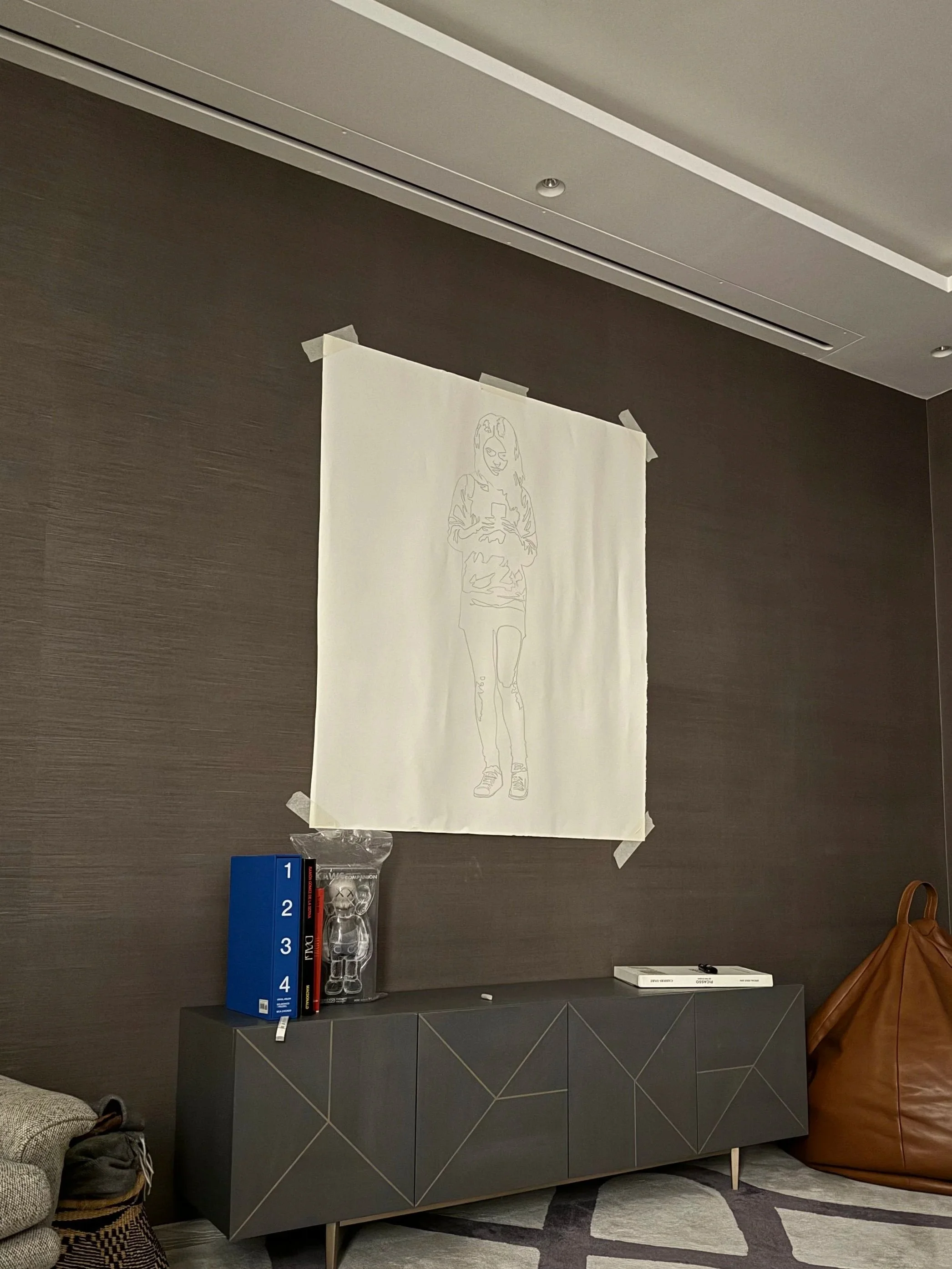Screen Walk
Acrylic-based ink and graphite on paper
Executed 26th April 2024
Screen Walk holds a defining place in my practice. It was the first fully realised artwork on paper in which I felt my language take shape, a clear transition from exploratory sketches and stencil studies into the bold, graphic vocabulary that would soon define my later work. Using acrylic-based ink and graphite on cartridge paper, I sought to distil both the technical precision and the emotional urgency of what I was beginning to understand as my subject: the quiet captivity of a generation growing up through screens.
The image portrays a teenage girl walking through the city, her eyes fixed on the device she holds. Her posture is slightly bent forward, drawn toward the light of her screen. Around her, there is nothing, no street, no sky, no context. I wanted to create a void where time and space dissolve, a reflection of the isolation technology imposes on the individual. Every line, every shadow, every omission in the drawing serves that intention.
The piece was inspired by a real moment I witnessed in London, a teenage girl walking home from school, colliding with strangers and never looking up. She didn’t apologise or even seem aware of those around her. That fleeting observation stayed with me. It felt emblematic of something larger: a kind of collective disappearance happening in plain sight. What could have been an everyday scene became, for me, an allegory, a generation moving forward, physically present yet spiritually elsewhere.
In this work, I moved decisively away from the chromatic contrasts that defined my earlier pieces from 2019, where colour was reserved for the devices and the bars covering children’s eyes. Those earlier compositions relied on vibrant backgrounds to symbolise the world of play and creativity from which the children were absent. In Screen Walk, I stripped all that away. I wanted the image to feel raw, immediate, black, white, and nothing in between. The bold contours, heavier shadows, and expanded silhouettes replaced the fragility of my earlier figures with a confrontational stillness. It was the first time I truly felt that the image could stand on its own, direct, uncompromising, impossible to ignore.
The title, Screen Walk, works on two levels. It describes the familiar act of walking while entranced by a screen, but it also suggests a procession, a collective movement, an entire generation walking together, guided not by awareness or instinct but by devices. The simplicity of the phrase carries its own irony; it names something ordinary, but behind that ordinariness lies a tragedy.
Looking back, Screen Walk became a pivotal point for me. It was the moment I realised that my work could be both deeply personal and socially charged, that I could use minimalism and clarity as weapons against apathy. This drawing not only marks a technical evolution, my transition into the fully graphic mode that would lead to my street interventions, but also a deepening of my purpose: to expose the psychological and emotional cost of our digital dependencies.
What I tried to capture in this piece is not just distraction, but a quiet form of absence, the erosion of presence itself. Screen Walk may depict one distracted teenager, but in truth, it is a portrait of all of us, walking, scrolling, disconnected, our attention elsewhere.



